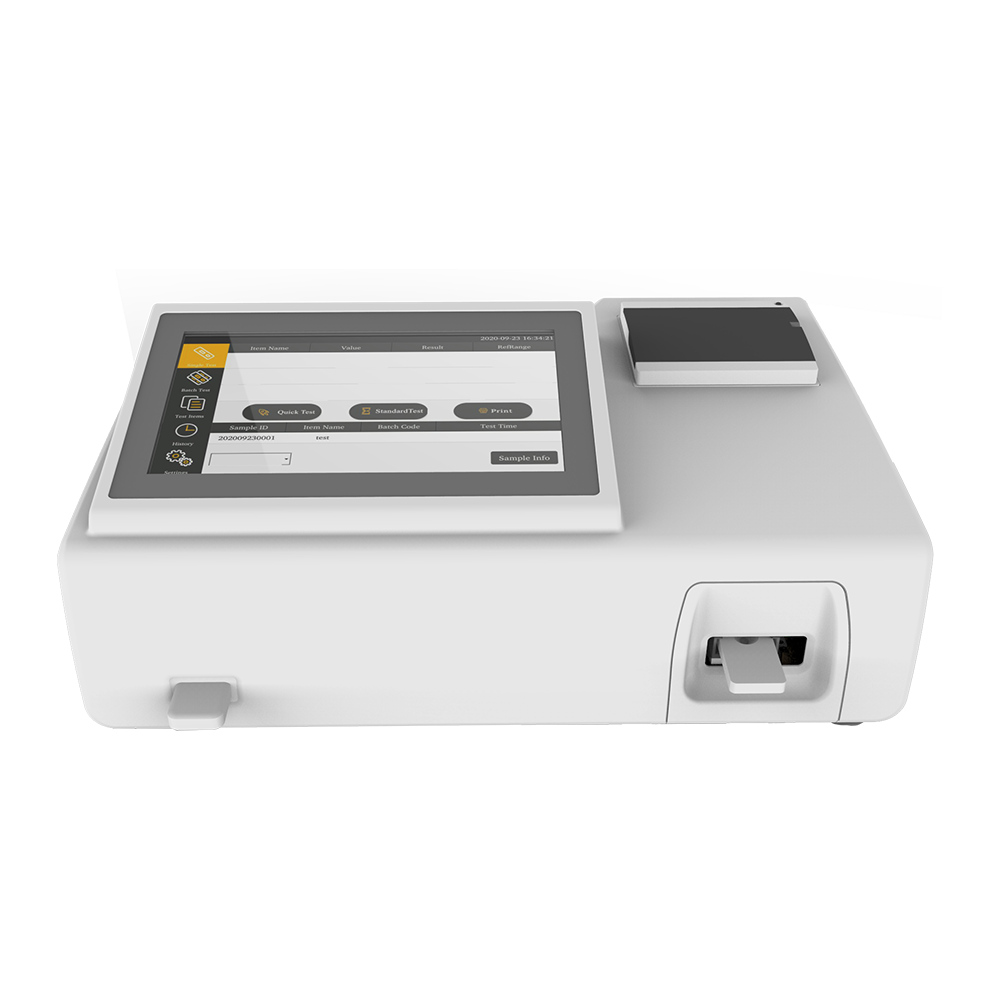Jul 01,2022
Fluorescence quenching by hemoglobin, bilirubin, or other interfering substances in clinical samples can lead to decreased signal intensity and affect the accuracy of fluorescence immunoassay results. Fluorescence immunoassay analyzers account for these effects using several strategies:
Wavelength Selection and Excitation Optimization – The analyzer uses fluorophores with excitation and emission wavelengths that minimize overlap with the absorption spectra of hemoglobin (typically absorbing at 400–600 nm) and bilirubin (absorbing around 450 nm). Selecting longer-wavelength fluorophores (e.g., red or near-infrared) helps reduce quenching effects.
Dual-Wavelength or Ratiometric Measurements – Some systems use reference wavelengths or dual-wavelength detection to differentiate true fluorescence signals from background absorption. This allows for correction of quenching effects in real-time.
Sample Preprocessing and Dilution – Pre-treatment methods such as sample dilution, centrifugation, or filtration can help remove or reduce interfering substances before fluorescence measurement.

Background Subtraction Algorithms – Advanced signal processing techniques are used to detect and correct for quenching effects by measuring background fluorescence levels and subtracting them from the final readings.
Use of Internal Standards and Controls – Internal reference standards or spiked control samples with known fluorescence intensity help in identifying signal suppression caused by quenchers like hemoglobin or bilirubin.
Optimized Assay Buffers – Buffers containing surfactants or stabilizers can help minimize the interaction between fluorophores and quenching agents, improving signal retention.
Time-Resolved Fluorescence (TRF) – Some advanced analyzers use time-resolved fluorescence, where fluorophores with longer-lived emissions (e.g., lanthanide-based dyes) allow delayed signal detection, reducing interference from short-lived background autofluorescence or quenching effects.
Multiplex Fluorescence Detection – Analyzers with multiplex capabilities can compare fluorescence intensities across multiple emission channels to distinguish quenching effects from true signal variations.
Fluorescence Enhancement Techniques – Some systems use enhancement strategies such as energy transfer mechanisms (e.g., Förster resonance energy transfer, FRET) or fluorescence amplification to counteract quenching effects.



 Español
Español
 Français
Français
 Deutsch
Deutsch
 عربى
عربى








